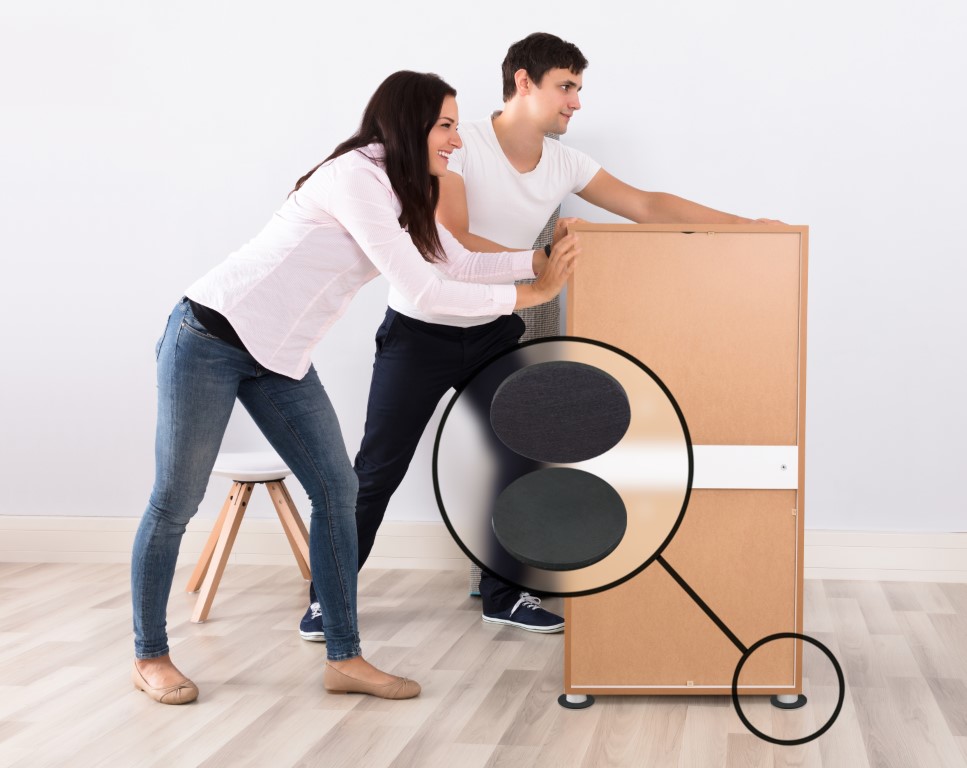How to Move Heavy Furniture Without Scratching Your Floors: A Step-by-Step Guide
Moving heavy furniture can be a daunting task, especially when you want to protect your floors from scratches and damage. This comprehensive guide will walk you through the steps to move heavy furniture safely while keeping your floors pristine.
Preparation: The Key to Success
Before you start moving any furniture, proper preparation is crucial to ensure a smooth and damage-free process.
Assess Your Furniture and Space
Take inventory of the furniture you need to move and measure doorways, hallways, and staircases to ensure your furniture will fit through. This step can save you a lot of trouble later on.
Clear the Path
Remove any obstacles from the path you’ll be using to move the furniture. A clear path reduces the risk of accidents and makes the moving process more efficient.
Gather Necessary Tools and Materials
Having the right tools on hand can make a significant difference in protecting your floors. Here’s what you’ll need:
- Furniture sliders
- Moving blankets or towels
- Furniture dollies
- Lifting straps
- Protective floor coverings
Protect Your Floors
Before moving any furniture, it’s essential to protect your floors:
- For hard surfaces like hardwood or tile, use Ram Board or similar heavy-duty floor protection. This durable material can withstand heavy foot traffic and unexpected impacts. Consider using Slipstick’s CB136 89mm Felt Furniture Sliders.
- For carpeted areas, apply protective carpet film. This film resists tears and punctures and can be left on for up to 30 days, providing ample protection during your move. Consider using Slipstick’s CB131 89mm Furniture Slider, which is excellent for moving heavy furniture on carpets and rugs.
Moving Techniques: The Right Way to Lift and Carry
Now that you’ve prepared your space, it’s time to start moving. Here are some techniques to help you move heavy furniture safely and efficiently.
Proper Lifting Technique
- Bend at the knees, not the waist.
- Keep the item close to your body as you lift.
- Lift with your legs, not your back.
- Keep your back straight throughout the lifting process.
Use Equipment Wisely
- Furniture Dollies: These wheeled platforms are great for moving heavy items across flat surfaces.
- Furniture Sliders: Place these under the legs or corners of heavy furniture to easily glide it across the floor. The Slipstick CB131 sliders can support up to 450 kg per set of 4, making them suitable for even the heaviest furniture.
- Lifting Straps: These straps help distribute the weight of the furniture, making it easier to lift and carry.
Specific Techniques for Different Types of Furniture
Different pieces of furniture require different moving techniques. Here’s how to handle some common types:
Sofas and Large Chairs
- Remove cushions and any detachable parts to lighten the load.
- Use the “high-low” method: one person lifts the high end while the other lifts the low end.
- Use Slipstick furniture sliders under the legs to easily move the sofa across the room.
Tall Furniture (Bookcases, Wardrobes)
- Empty the furniture completely before moving.
- Tilt the furniture slightly to change its center of gravity, making it easier to move.
- Use the “hook” technique when moving through doorways: continuously turn the furniture as it moves through the frame to minimize its width.
Tables
- If possible, disassemble the table by removing the legs.
- For tables that can’t be disassembled, simply place Slipstick furniture sliders under the corners.
- Use moving blankets to protect the surface of the table.
Special Considerations for Different Floor Types
Different flooring materials require different protection methods:
Hardwood Floors
Hardwood floors are particularly susceptible to scratches and dents. Consider these tips:
- Use felt pads under furniture legs when sliding. Slipstick offers the CB136 Felt Furniture Movers, which are ideal for protecting hardwood floors.
- Avoid rubber-based materials, as they can leave marks on hardwood.
Tile Floors
While more resistant to scratches than hardwood, tile floors can still be damaged:
- Use hard plastic sliders instead of felt ones, as they move more easily on tile.
- Be cautious of the grout lines, which can be chipped or damaged.
Carpet
Carpet can be stretched or torn if not properly protected:
- Use carpet film to protect against dirt and tears.
- When using furniture sliders, opt for the Slipstick CB131 sliders designed specifically for carpet.
After the Move: Cleaning and Inspection
Once you’ve successfully moved your furniture, take these final steps:
- Remove all protective materials carefully.
- Inspect your floors for any damage.
- Clean the floors thoroughly to remove any dirt or debris from the move.
- If you notice any scratches or damage, address them promptly to prevent further deterioration.
Conclusion
Moving heavy furniture without scratching your floors is achievable with the right preparation, tools, and techniques. By using quality products like Slipstick furniture sliders and following the steps outlined in this guide, you can protect your floors while safely relocating your furniture. Remember, the key elements are proper preparation, using the right tools and techniques, and not being afraid to ask for help when needed.

